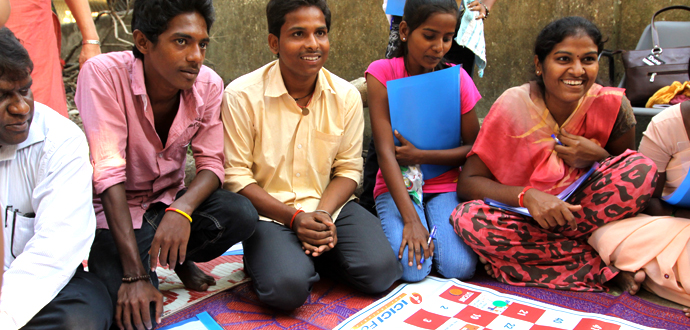
On receiving news about the prize, Mr Singh said “this is very encouraging, energizing and inspiring news. Through the Indian wisdom of rainwater harvesting, we have made helpless, abandoned, destitute and impoverished villages prosperous and healthy again. In its citation, The Stockholm Water Prize Committee says that “today’s water problems cannot be solved by science or technology alone. They are instead human problems of governance, policy, leadership, and social resilience. Rajendra Singh’s life work has been in building social capacity to solve local water problems through participatory action, empowerment of women, linking indigenous know-how with modern scientific and technical approaches and upending traditional patterns of development, resource use, and social norms.”
“In a world where demand for freshwater is booming, where we will face a severe water crisis within decades if we do not learn how to better take care of our water, Mr Singh is a beacon of hope,” says Torgny Holmgren, SIWI’s Executive Director. “He has literally brought villages back to life. We need to take Mr Singh’s lessons and actions to heart if we are to achieve sustainable water use in our lifetime.”
Rajendra Singh’s work reveals a true humanitarian and firm believer in empowerment. After studying Ayurvedic medicine and surgery, he went into the countryside in the largely impoverished state of Rajasthan in the mid-1980’s with the aim to set up health clinics. Instead, he was told by villagers that the greatest need was not health care, but water. As wells dried up, crops wilted, and rivers and forests disappeared, many able-bodied villagers left in search for work in the cities. Women, children and the elderly were left behind, without hope, as their villages were being overrun by sand and dust.
Rajendra Singh did not insist with the clinics. Instead, and with the help of the villagers, he set out to build johads, or traditional earthen dams. Two decades after Rajendra Singh arrived in Rajasthan, 8,600 johads and other structures to collect water had been built. Water had been brought back to a 1,000 villages across the state. Mr Singh, his co-workers in Tarun Bharat Sangh (India Youth Association) had gotten water to flow again in several rivers of Rajasthan. The forest cover has increased, and antelope and leopard started returning.
The methods used by Mr Singh are modernisations of traditional Indian ways of collecting and storing rainwater, dating back thousands of years. The methods fell out of use during British colonial rule, but have now brought water back to the driest state in one of the world’s most populous nations, thanks to the “Water man of India” and his colleagues.
“When we started our work, we were only looking at the drinking water crisis and how to solve that. Today our aim is higher. This is the 21stcentury. This is the century of exploitation, pollution and encroachment. To stop all this, to convert the war on water into peace, that is my life’s goal”, says Mr Singh.
Climate change is changing weather patterns around the world, leading to more frequent and intense droughts and floods. Learning how to harvest rainwater, cutting the peaks of water to fill the troughs, will be a key skill in most parts of the world. Some of the world’s finest scientists are currently focusing their attention on the management of rain and how to best develop the knowledge.
“We need to learn more about managing and harvesting rain in order to reduce our exposure to droughts as well as floods”, says SIWI’s Torgny Holmgren.
“Due to the harvesting of rain and recharging groundwater, there is no scope for drought or floods in our area. This work of ours is a way to solve both floods and droughts globally. Therefore we believe the impact of this work is on the local level, national level, the international level and above all at the village level,” says Rajendra Singh.
H.M. King Carl XVI Gustaf of Sweden, Patron of the Stockholm Water Prize, will present the prize to Rajendra Singh at a Royal Award Ceremony during 2015 World Water Week in Stockholm on 26 August.
















